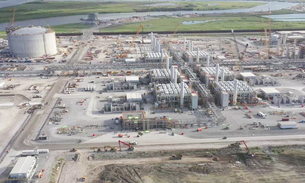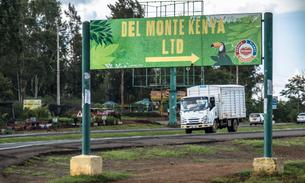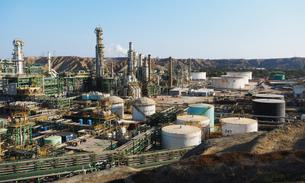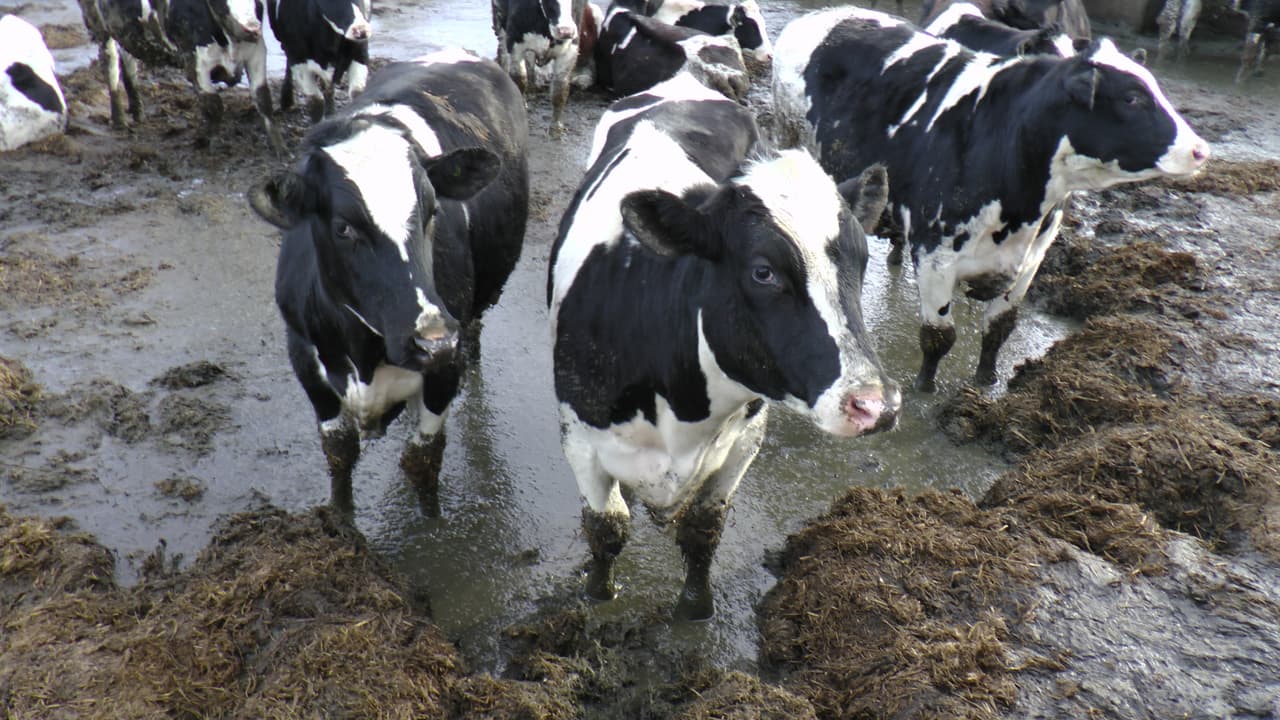
Deadly gas: Cutting farm emissions in half could save 3,000 lives a year
Thousands of deaths each year could be avoided if air pollution from UK farms was halved, new analysis has revealed, but the government’s failure to act means the most damaging sectors are under no obligation to cut their emissions.
The thousands of tonnes of faeces and urine produced by UK farm animals a day release ammonia gas, which combines with other particles in the air to create one of the most deadly forms of pollution. Ammonia is the only pollutant on the rise in the UK, and taking simple measures to cut it would be the “most effective way” to clean up our air and prevent deaths, according to a leading expert.
During a five month investigation the Bureau and the Guardian found:
- The government only monitors ammonia emissions from the largest intensive poultry and pig farms, completely missing the biggest polluters — beef and dairy farms.
- Despite promising to close this loophole by 2025, Michael Gove, the environment secretary, has not laid out a clear plan or any legislation to do so. In the meantime, the number of intensive US-style beef feedlots and dairy “megafarms” has been increasing.
- Cuts in staffing at the Environment Agency, which polices farm emissions, mean farms are not always monitored properly, leaked correspondence shows.
- Demand for cheap food is preventing farmers taking the basic but expensive steps to cut ammonia because their profit margins are too narrow. Brexit is likely to exacerbate this, as farmers may struggle to compete with cheap imported food.
Matt Hancock, the health secretary, has called air pollution a national health emergency and a “slow and deadly poison”. Yet efforts to reduce it have largely ignored ammonia, despite its key role in producing dangerous particles.
In the UK the vast majority of the gas comes from livestock farms, particularly from slurry, a mixture of faeces and urine. Slurry is produced when animals are kept indoors, either over winter or in intensive farming systems, and is then stored for use as a fertiliser.
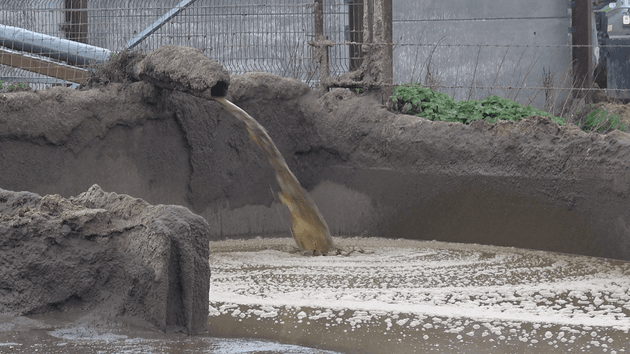 Slurry, a liquid mixture of animal faeces and urine, is piped into a lagoon for storage
TBIJ
Slurry, a liquid mixture of animal faeces and urine, is piped into a lagoon for storage
TBIJ
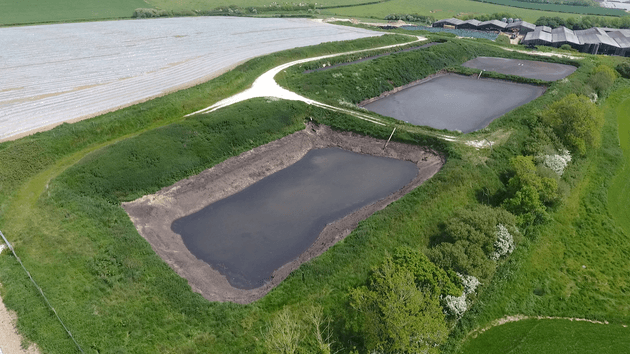 The slurry continues to give off ammonia while stored in the vast, uncovered lagoons
TBIJ
The slurry continues to give off ammonia while stored in the vast, uncovered lagoons
TBIJ
Ammonia travels on the wind and can mix with industrial and car fumes, creating a form of “particulate matter”, PM 2.5, that has been linked to higher death rates, respiratory problems, cardiovascular diseases, cognitive decline and low birth weights.
“PM2.5 is probably responsible for somewhere between half and three quarters of the total harm we derive as humans from air pollution,” said Alastair Lewis, a professor of atmospheric chemistry at the National Centre for Atmospheric Science. He said about half of PM2.5 in urban areas is associated with ammonia.
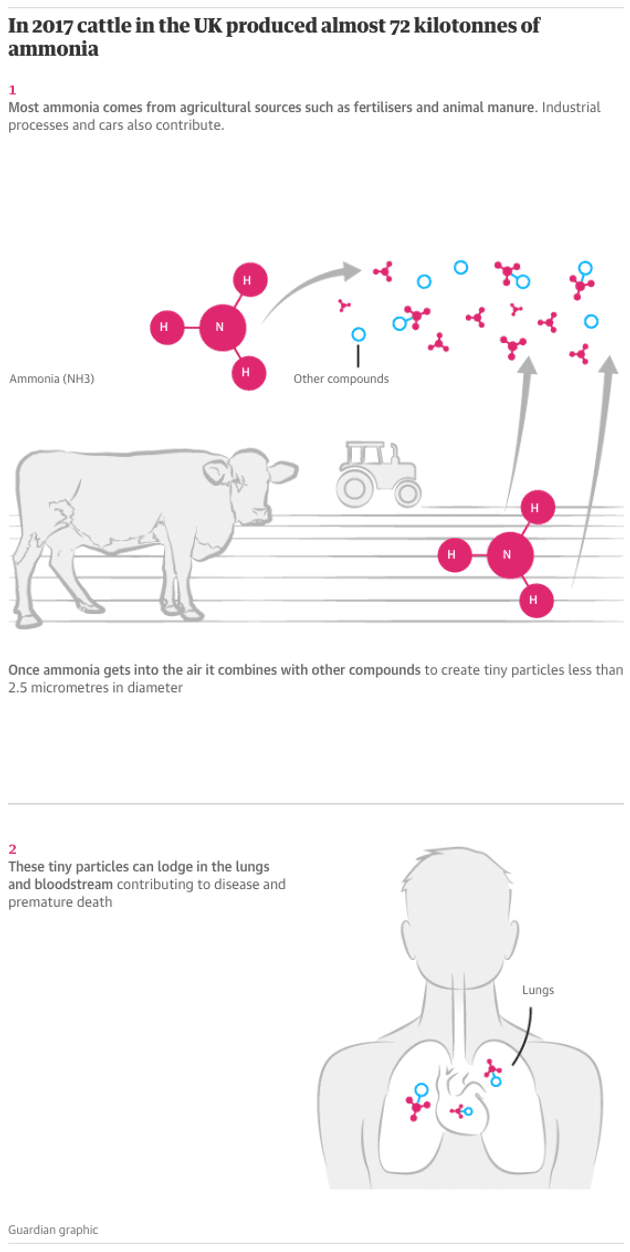
When Andrea Pozzer, a lead researcher from the Max Planck Institute for Chemistry in Mainz, Germany, analysed EU-wide data on air pollution and mortality, he found 50,000 lives could be saved every year by cutting emissions from farms in half. His analysis for the Bureau looking at the UK in particular suggests cutting these emissions could prevent at least 3,000 premature deaths a year, although he added that the true figure was likely to be much higher.
He said: “Ammonia is playing a lead role in this fine particle formation and the reduction of it could really improve the air quality.”
Over two decades from the 1990s, ammonia levels relating to agriculture in the UK actually fell by about 20%, but from 2013 to 2017 they crept up again by more than 10%.
Yet despite this, the government only collects farm-by-farm ammonia emissions data from a small number of facilities — those considered “intensive” pig and poultry units, which house more than 40,000 birds, 2,000 pigs or 750 sows and require a permit. Emissions from these farms in England and Scotland rose by 2.6% between 2015 and 2017, according to a Bureau analysis of the estimated emissions of every farm.
That rise alone is cause for concern, but these regulated pig and poultry farms account for only 4% of the UK’s total ammonia emissions, while many more livestock units keep animal numbers just below the threshold for regulation.
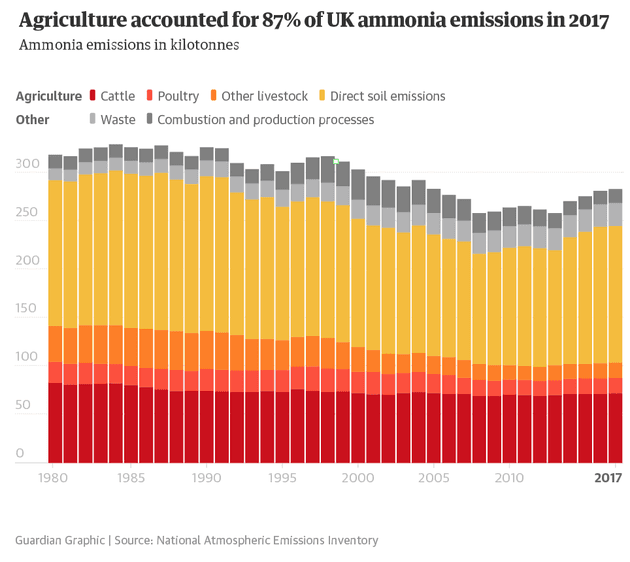
Cuts to the Environment Agency mean there may not be sufficient staff to enforce slurry regulations on livestock farms. A leaked email shows at least one official admitting that staff cutbacks are hampering the agency’s ability to monitor the problem. Without such monitoring, farmers can — knowingly or unknowingly — breach what few rules there are. Last year Unearthed, the investigative journalism unit at Greenpeace, found the number of site inspections by the agency had fallen by more than a third over four years. The analysis also showed there had been the equivalent of 2,500 full-time jobs cut at the agency over five years.
The Environment Agency told the Bureau that it had 10% more operations staff than in 2009, including those who visit farms and rivers, and that it has 6,500 officers across England trained and ready to respond to environmental incidents on farms. It said the agency was the largest of its kind in Europe, with an annual budget of more than £1bn.
Dairy and beef farms are the most polluting sector, accounting for more than 40% of the total ammonia released in the UK, yet are under no obligation to mitigate or even monitor their air emissions because of a loophole in the regulations.
In the absence of official monitoring, the Bureau carried out air tests around eight dairy farms across the south of England: six intensive “megafarms” housing more than 700 cattle; one confinement unit (with some of the herd permanently housed); and one conventional outdoor farm with animals grazing.
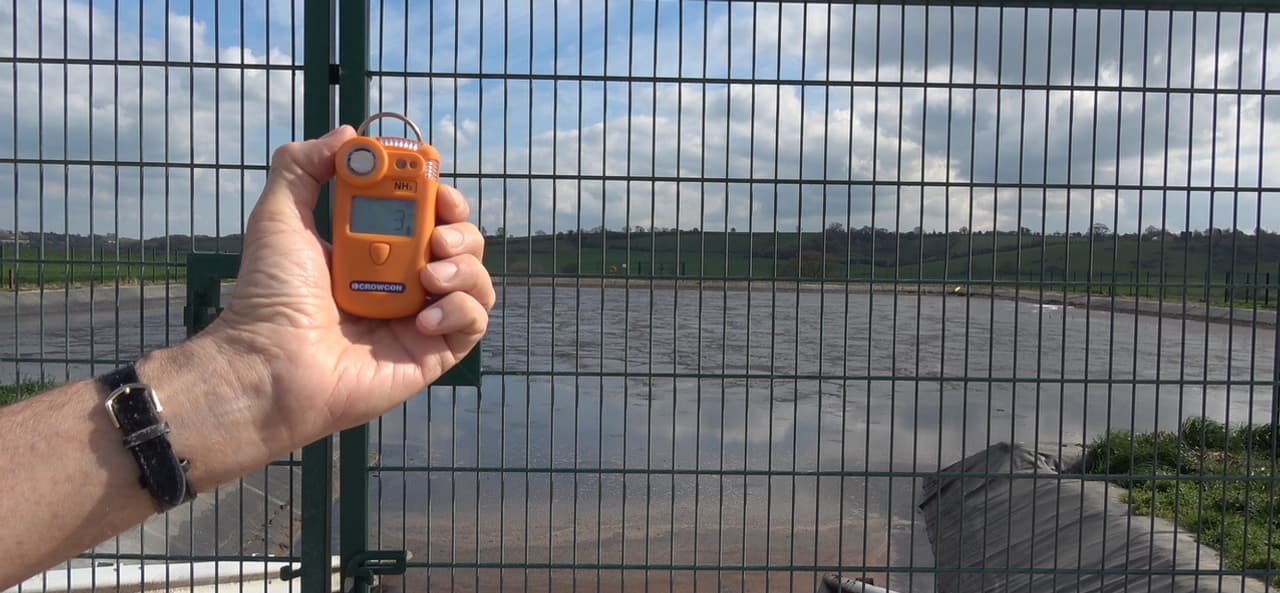
Ammonia hotspots were detected at two of the megafarms, including adjacent to an uncovered slurry storage tank and near a farmyard, and at various points around the outdoor dairy farm, including next to a farm building, on the road running through the farm, and by a large waste lagoon.
There were slurry lagoons on most of the farms the Bureau visited, with the largest the size of swimming pools. The uncovered brown ponds of urine and faeces were mainly enclosed by barbed wire and signposted as dangerous or toxic, but one was less secure and unfenced. None of the lagoons the Bureau saw during testing was covered, which is a simple way to cut ammonia emissions from slurry by half. Defra figures from 2017 suggest that 80% of cattle slurry lagoons and tanks and 76% of those on pig farms are uncovered.
In January Gove set out a Clean Air Strategy that finally addressed ammonia and said that the loophole for intensive cattle “megafarms” would be closed by 2025, but it did not lay out any specifics for how the farms would be monitored or regulated.
Moreover, it did not set out a funding plan for the costly but simple solutions for cutting ammonia: covering up slurry tanks, and then injecting the mixture into fields, rather than spraying it. These methods have been used in other European countries for decades: Denmark has required slurry tanks to be covered for more than 30 years.
A Defra spokesperson said the Clean Air Strategy would tackle farm ammonia pollution, by requiring and supporting farmers to invest in the infrastructure and equipment required to reduce emissions. It told the Bureau it would work with the farming industry to agree on the techniques it would require, and that these conversations would inform future regulation of the cattle sector. The Bureau understands that Defra does not have a specific target for the reduction of ammonia from cattle.
Vicki Hird, food and farming campaign co-ordinator at Sustain, which campaigns on farming, says: “Air pollution is a hidden killer, for humans and wildlife, and increasing ammonia emissions from intensive farming need to be addressed urgently. Expecting farmers to act when they are facing a flood of cheap imports after Brexit, cuts to subsidies and a seven year wait for an unknown farm support scheme is unreasonable.”
Farmers told the Bureau they would be happy to introduce such measures, but that their narrow profit margins, squeezed by the demand for cheap food, meant they could not afford them without government grants. Low profits are also pushing smaller farms out of business and forcing surviving farmers to intensify.
“Supermarkets have got to be paying more. They have to pay a realistic price for the product the farming community is producing,” said one dairy farmer. “Thousands of milk producers have gone out of business this year and the ones that are left will just get bigger and bigger.”
The National Farmers’ Union said farmers wanted to cut their environmental impact but needed more assistance from the government. “Farmers don’t want the nitrogen [from ammonia] going into the air, it’s no use to them there — they need it on the crops,” said Guy Smith, deputy president of the NFU. He added that farmers were keen to improve their performance on environmental issues, but “current assistance [from the government] is not adequate, and difficult to access.”
Another dairy farmer who keeps 480 cows, some housed year round, said it came down to cost. “Pay a better price for the product we produce,” he said. “If the milk price went up by 10 or 15% we could all look after the environment a lot better. But we don’t get anything for it.”
Ammonia from slurry pollution also has serious effects on wildlife in the areas surrounding the farms. Read the Bureau's report from Gregynog in mid-Wales.
Header image of cows at a British farm (ear tags obscured to prevent identification) by TBIJ
Our Food and Farming project is partly funded out of Bureau core funds and partly by the Hollick Family Foundation (for 2020) and The Guardian. None of our funders have any influence over the Bureau’s editorial decisions or output.


